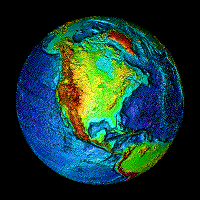GLS
Global Land Survey 2005
GLS 2005 data is scene-based, and can be searched and downloaded from
Related links:
- Land Cover Land Use Change Program
- The Landsat-Org Satellite Image Gallery
- Global Observation of Forest and Land Cover Dynamics
- http://landsat.usgs.gov/science_GLS2005.php
- http://gls.umd.edu/background.html
- http://landsat.usgs.gov/gallery.php
- http://landsat.gsfc.nasa.gov/
- http://glcf.umiacs.umd.edu/index.shtml
The Global Land Survey (GLS) is a partnership between the U.S. Geological Survey (USGS) and the National Aeronautics and Space Administration (NASA), in support of the U.S. Climate Change Science Program (CCSP) and the NASA Land-cover and Land-use Change (LCLUC) Program.
Characterizing trends in land cover and land use remains a key goal for Earth science. The GLS is assembling a global dataset of 30-meter resolution satellite imagery to support measurement of Earth’s land cover and rates of land cover change during the first decade of the 21st century.
The GLS builds on the existing Geocover data sets developed for the 1970’s, 1990, and 2000. Some 9500 Landsat images from the period 2004-2007 will be acquired, processed, and made available to the public via FTP download. Given the failure of the Landsat-7 ETM+ Scan Line Corrector in 2003, a combination of Landsat-7 gap-filled data and Landsat-5 data from U.S. and international ground stations will be used in the project. Additional imagery from ASTER and EO-1 ALI imagers will be included to augment the Landsat coverage. Processing will begin in early 2007 and orthorectified products will be made available for download throughout the project. The complete dataset is expected to be completed in late 2008. Feedback: glsinfo@hermes.geog.umd.edu
Global Land Survey (UMD.EDU)
As noted in the Strategic Plan for the US Climate Change Science Program (CCSP), the systematic measurement of trends in global land cover is a priority for understanding land/climate interactions and maintaining ecosystem goods and services for society. In particular, repeated observations of land cover on time scales of 1-5 years are required to adequately characterize trends such as deforestation, agricultural expansion, urbanization, and ecosystem disturbance.
In the late 1990’s, NASA and MDA Federal partnered to create the highly successful Geocover data set. This orthorectified, global dataset of cloud-free Landsat imagery, centered on 1975, 1990, and 2000 epochs, has supported numerous science studies and mapping applications. Geocover data may be obtained at no cost from the USGS EROS, the University of Maryland Global Land Cover Facility, or the Michigan State University Tropical Rain Forest Information Center.
Other Links:

Leave a comment